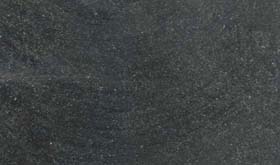Marble
What is a Limestone ?
Limestone is a sedimentary rock primarily made of minerals such as calcite and aragonite.
Most limestone includes fossilized debris, shell fragments and other small fossils which are visible to the human eye on close examination of stone surface. However, some varieties of limestone are made of extremely fine grains which are nothing but the fragments of marine organisms like foraminifera or coral. Other grains comprising limestone include extraclasts, intraclasts, peloids and ooids.
Limestone constitutes nearly 10% of the total amount of sedimentary rocks in the Earth. In 1778, BelsazarHacquet was the first geologist to distinguish limestone from dolomite. Karst landscapes are formed by the solubility of limestone in weak acid solutions and water.
Properties of Limestone
Limestone is usually gray in color, but may also be found in brown, yellow or white color. It is a soft rock and hence it can be scratched easily. It tends to effervesce in any common acid solution.
The porosity and texture of limestone vary from that of coquina which is a matrix of sea shells made of calcite and that of ooliticlimestones with fine structures. During major geological events, limestone deposits undergo metamorphism in which limestone recrystallizes into marble.
Limestone may be massive, granular, clastic or crystalline in form based on the method of formation. Some of the small cavities of limestone may be layered with crystals of barite, dolomite, calcite or quartz. Under the conditions of precipitation, calcite crystals enable formation of mineral coatings cementing the rock grains together or filling the fractures.
Uses of Limestone
Limestone is widely used in the following:
- Architectural application for walls, veneer and decorative trim
- As a raw material for the manufacture of mortar, cement, slaked lime and quicklime
- Glass manufacture
- Blast furnaces
- As a supplementary for calcium levels in livestock feed
- As a soil conditioner
- As a pigment in tiles, paper, plastics, toothpaste and other materials

Pink Limestone

Grey Limestone Handcut

Green Limestone Natural

Blue Limestone Polished

Black Honed

Udaipur Green
2019 avilongranites.com. All rights reserved.
